Effective ergonomics applies to all employees, and its importance magnifies as we age due to natural degeneration and years of exposure to biomechanical forces.
Workers over the age of 55 represent a large and essential segment of the American economy, and their influence is growing. According to the U.S. Bureau of Labor Statistics, 1-in-4 U.S. workers will be 55 or older by 2030. Since the year 2000, employment rates for people 55 and older have increased from 31.5% to 41.1% by the end of 2022.
Some older workers are not in a position to retire, while roughly 20% of Americans have no plans to retire. Mandatory retirements for law enforcement contribute to a shortage of officers, especially when retirees take an inordinate amount of time to replace.
The work that needs to be done in any operation does not necessarily dissipate when there are fewer workers. The realities of labor shortages can lead to longer hours and more work demands for all workers, including older workers.
10 Ergonomic Strategies to Consider
- Contact ergonomists and/or risk control professionals from your insurance carrier for their expertise in controlling and reducing the risks of ergonomic-related claims. Involve ergonomists in the design of work areas as early as possible.
- Analyze claims and employee reports of discomfort to prioritize which work areas to assess for ergonomics issues and employ work redesign and other interventions. Experts will typically apply a hierarchy of controls approach and consider engineering, administrative, work practice, and equipment controls.
- Align footwear expectations with controlling risks of walking, standing, or climbing work surfaces. If the work surface is slippery, concrete, or some other hard surface, the workplace footwear should be slip-resistant, supportive, and designed for standing on concrete and other hard surfaces within a work environment.
- Establish body mechanics methods by job description to help educate all employees, including an aging workforce, on how to manually handle objects with minimized weight and biomechanical forces to vulnerable areas of the body such as knees, lower back, and shoulders.
- Apply functional employment testing (also known as fit-for-duty testing) during the hiring process to help ensure you are hiring employees who are physically capable of performing the job. Typically, functional employment testing is conducted after the employee is offered employment. If the sequence of conducting functional employment testing is in question, be sure to seek advice from HR and/or legal professionals.
- Set up Ergonomics Steering Committees with stakeholders that can help influence and drive a culture of reducing risk factors. Regardless of the methods of control, ergonomic interventions must be inclusive and accepted by the workforce to be effective.
- Establish a Stretch and Flex program, which includes regular stretching and strengthening of the muscles that are commonly associated with sprains, strains, and other ergonomic injuries.
- Consider providing on-the-job workers’ compensation physical rehabilitation, which helps reduce indemnity costs and tends to help injured employees recover and heal faster.
- Encourage routine use of primary care physicians for health issues that are not related to work. When a workplace injury occurs, co-morbidities can exacerbate the injury and complicate the healing process.
- Plan early to hire to replace retirees. Having enough employees to perform work can reduce overexposure to individual employees.
*The views and opinions expressed in the Public Risk Management Association (PRIMA) blogs are those of each respective author. The views and opinions do not necessarily reflect the official policy or position of PRIMA.*
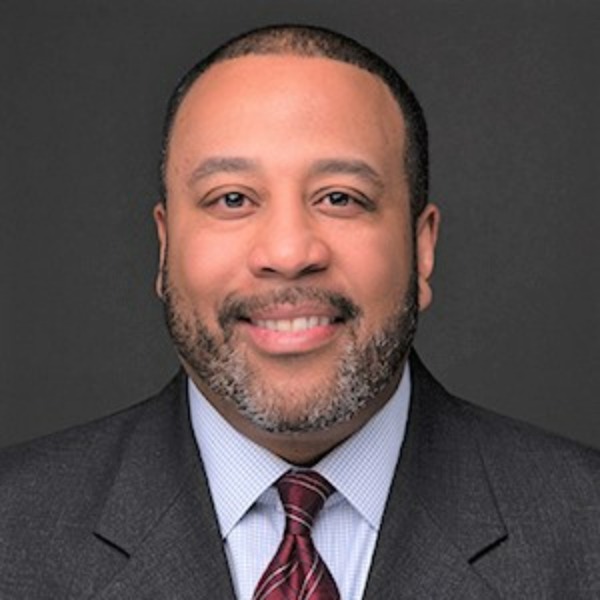
By: Ariel Jenkins
Assistant Vice President - Risk Services, Safety National
Summary of Qualifications
Ariel has a broad base of knowledge and experience in the areas of workers’ compensation, ergonomics, industrial hygiene, OSHA, fleet safety, auto liability, general liability, and safety & health program auditing & assessment. He has experience working with the manufacturing, construction, ground and air transportation, retail, healthcare, public entities, technology, and service industries.
Responsibilities
Ariel is responsible for leading and directing client services, technical risk control content and risk control services for clients (policyholders) of Safety National. He is also responsible for leading and directing risk control resources associated with the public entity practice and liability insurance product lines.
Business Experience
Ariel is a risk control professional with over 27 years of experience. Prior to joining Safety National, Ariel worked at a major insurance carrier, serving in various capacities as a technical loss prevention consultant of national market accounts. During this time, he was assigned as district safety consultant for the largest transportation company, and one of the largest employers in the U.S. Ariel began his career as a safety consultant with the Missouri Department of Labor and Industrial Relations in the Division of Workers' Compensation, where he was responsible for monitoring the loss control services of insurance carriers and performing risk evaluations for self-insured applicants.
ERM Experience
Ariel has consulted to a fortune 500 company on aspects of ERM with respect to multiple stakeholder operational and strategic risks.
Professional Affiliations
Ariel has earned his Certified Safety Professional (CSP) designation, and Associates in both Risk Management (ARM), Public Entity (ARM-P), and Enterprise-Wide Risk Management (ARM-E). Ariel is a member of the American Society of Safety Engineers (ASSE), and served as sustainability chair for the Missouri Safety Council in 2009.
Education
Ariel is a graduate of the University of Central Missouri with a bachelor’s degree in industrial safety management. He also earned a Master of Business Administration degree from Lindenwood University in St. Charles, MO.
Ensuring safety in both high-risk environments and everyday workplaces is not just a priority; it's a fundamental responsibility. The Permit-to-Work (PTW) process unfolds like chapters in a book: permits, request, approval, commencement of work, closure, or renewal, and then the cycle repeats. It's a narrative—one that ensures you and your team adhere to safety protocols so everyone can return home safely each day.
Chapter 1 –The Preface (Permits)
At the heart of the PTW system are permits—detailed documents that not only grant you authorization but also act as your roadmap. Used at designated sites, they guide you through intricate tasks—your golden ticket to providing a secure working environment. Permits outline potential hazards and specify necessary precautions. Before embarking on any task, each permit undergoes a thorough review and approval process, indicating every control measure, required training and precaution. Upon completion, it's your confirmation that hazards are identified, controls are implemented and risks are reduced.
Chapter 2 – The Table of Contents (Advantages of PTW)
One significant advantage of a formalized Permit-to-Work system is the ability to organize and coordinate your tasks across various sites and industries, like the table of contents in a book. They tell you what is coming next, enhance the visibility of tracking permits and workers on site, and facilitate the scheduling of larger and more complex activities. This level of organization helps you meticulously manage your program, allowing you to focus on your work. However, navigating a PTW system presents its share of challenges.
Chapter 3 – The Plot (Challenges)
The primary challenges often revolve around standardization and centralization—issues you might encounter in the field. As a professional moving between sites and companies, you may face difficulties if permits are inconsistently completed across different systems. This lack of uniformity can lead to confusion and potential safety hazards. To address these challenges, organizations implement best practices to ensure the effectiveness of their PTW systems.
Anticipating permit suspensions and understanding potential interactions or conflicts between permits is crucial, something you'll experience in the plot twists of your daily tasks. Jobs may need to be halted if permits lack necessary information or approvals. It is vital to ensure that activities permitted by one document do not pose hazards for another. Implementing a systematic approach, especially during multiple shifts, reduces risk and saves time—ensuring that your work is seamlessly and safely passed from one set of hands to another.
Chapter 4 – The Last Chapter (Best Practices)
Effective PTW systems rely on coordination and control by an issuing or responsible EHS professional (the author). Adequate (human) supervision is essential, however digital systems have proven to be an invaluable tool for increasing efficiency, consistency and accuracy. A cloud-based approach allows for seamless submission, reference and monitoring of permits and, in the end, a streamlined process.
Lastly, permit approvals are not just checkboxes; they are the conclusion of a well-crafted story. Prioritizing your tasks based on risk rating, job type and project deadlines ensures that critical tasks receive the attention they deserve.
*The views and opinions expressed in the Public Risk Management Association (PRIMA) blogs are those of each respective author. The views and opinions do not necessarily reflect the official policy or position of PRIMA.*
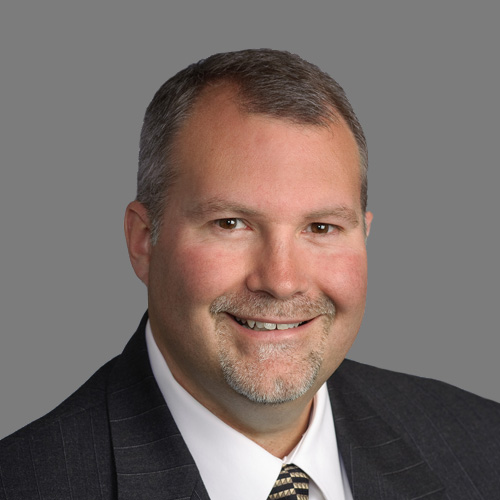
By: Marc Juaire, CPSA, MBA
Solution Executive, VelocityEHS
Marc combines his EHS, operational risk, and ESG experience to define vision and strategy to deliver best-in-class solutions and make workplaces safer and more sustainable. Marc has 30 years of experience as an EHS professional, providing strategic direction and leadership in EHS auditing, process safety, compliance and training.
Marc has a Bachelor of Science degree in chemical engineering from the University of Minnesota and an MBA from Carlson School of Management. He is a Certified Process Safety Auditor with the Institute of Internal Auditors.
More than 60% of persons detained in jails have a substance use disorder, compared to 5% in the general population[1]. When these persons abruptly stop using substances, they often undergo withdrawal. Left untreated, persons withdrawing from substances - many of whom also have other medical and mental health problems - can quickly develop serious health complications, sometimes resulting in death.
Under the Fourteenth Amendment and the Americans with Disability Act, pretrial detainees cannot be denied reasonable health care and appropriate medications for substance use disorder and withdrawal. Municipalities are seeing an increase in lawsuits, including wrongful death claims, alleging inadequate health care, often resulting in large settlements or judgments against sheriffs, correctional staff, and healthcare staff.
Municipal officials and jail administrators can save lives and mitigate the risk of liability by working with jail health care providers to develop and implement jail policies, procedures and training to properly recognize, manage and treat persons at risk of experiencing substance withdrawal and those who are going through withdrawal. A good place to start: Guidelines for Managing Substance Withdrawal in Jails: A Tool for Local Governmental Officials, Jail Administrators, Correctional Officers, and Health Care Professionals published in June 2023 by the U.S. Department of Justice[2].
Devised by clinical experts (including substance use disorder specialists) with experience in criminal justice settings in collaboration with experts in jail administration, these comprehensive guidelines rely on evidence-based medical practices and account for the practical constraints under which jails operate. While the guidelines cover topics on substance-specific withdrawal management common to all jails, small jails or jails with limited resources will also find useful recommendations on how to meet the standard of care for managing substance withdrawal.
The key components of effective policies for managing persons at risk for substance withdrawal include:
- Intake screening to flag withdrawal risk. All persons admitted into jail should be observed and screened by healthcare staff or well-trained corrections staff to identify persons at risk of or experiencing substance withdrawal. This is crucial for identifying persons in need of immediate clinical assessment and those who need to be closely monitored for the emergence of signs of withdrawal.
- Clinical assessment and diagnosis. Healthcare staff should evaluate the person to gauge the risk and expected severity of withdrawal and complications based on the person’s medical and mental health conditions and history. This helps determine whether the jail can manage the the withdrawal process onsite, or whether the person should be transferred to a higher level of care.
- Withdrawal management by healthcare professionals. The level of care, including medications, should be appropriate for the level of severity of the withdrawal and the potential for health complications.
- Monitoring for withdrawal signs and symptoms. Because the onset and intensity of withdrawal is unpredictable, all persons at risk of withdrawal should be monitored frequently by corrections staff and healthcare staff in consultation with a physician.
- Training. Corrections staff should be well trained to recognize signs and symptoms of withdrawal and know when to immediately transfer the person to an external facility.
[1] https://sheriffs.org/publications/Jail-Based-MAT-PPG.pdf; https://bjs.ojp.gov/content/pub/pdf/dudaspji0709.pdf
[2] https://bja.ojp.gov/news/new-resource-guidelines-managing-substance-withdrawal-jails
*The views and opinions expressed in the Public Risk Management Association (PRIMA) blogs are those of each respective author. The views and opinions do not necessarily reflect the official policy or position of PRIMA.*

By: Bhairav Radia
Partner/Shareholder, IFMK Law, Ltd.
Summary of Qualifications
Bhairav has 16 years' experience defending public entities in civil rights litigation, primarily in federal court, with a focus on jail and police litigation. He has litigated cases through jury or bench trials, counseled clients on mitigating jail liability and conducted critical incident investigations and risk evaluations in jails. Bhairav has also managed a small family-owned tea producing and export business with about 700 employees for 14 years.
ERM Experience
- Counseling sheriffs, jail administrators, and risk managers on mitigating jail liability
- Conducting critical incident investigations and risk evaluations in jails
- Reviewing and auditing jail policies and procedures
- Presenting training seminars on best practices in jail operations
Professional Affiliations
- American Bar Association
- Illinois State Bar Association
- Illinois Association of Defense Trial Counsel
Education
- Chicago-Kent College of Law, J.D., 2007
- Arizona State University, B.A., 2004 (summa cum laude)
The dynamic nature of the cyber threat landscape demands that public service organizations have a comprehensive understanding of evolving risks. Cybercriminals continually refine their methods, from ransomware attacks that encrypt critical data to stealthy data breaches that compromise sensitive information. As technology advances, so do the tools at the disposal of malicious actors. Studies have shown that attacks on public sector organizations are increasing, and many are not adequately prepared to face the threat.
Public entities, being custodians of vast amounts of sensitive data, find themselves at the crossroads of heightened cyber threats. Government agencies and municipal organizations are prime targets for cybercriminals seeking to exploit vulnerabilities in critical infrastructure. The impact of a successful breach extends beyond operational disruptions; it erodes public trust. Public entities must allocate funds to fortify their cyber defenses, recognizing that the stakes are not only financial but also involve maintaining the public's confidence in their ability to safeguard information.
Beyond the immediate consequences, the compromise of public entities can have cascading effects on national security and citizen safety. Critical infrastructure, controlled by government bodies, is integral to the functioning of a society. Cyber-attacks targeting public entities may aim not only to steal information but also to disrupt essential services, posing a direct threat to public safety. Therefore, cybersecurity funding becomes not just a safeguard for organizational data but a crucial measure for upholding the overall stability and security of a nation.
The regulatory landscape around data protection has become increasingly stringent, necessitating public entities stay in compliance with evolving standards. Non-compliance not only invites legal consequences but also exposes these organizations to heightened cyber threats. Cybersecurity funding should align with the commitment to meeting regulatory standards, ensuring that the organization not only avoids penalties but also maintains a secure posture in an environment of evolving regulations.
As regulations evolve, so do the tactics of cybercriminals aiming to exploit gaps in compliance. Adequate cybersecurity funding allows public entities not only to meet current regulatory requirements but also to anticipate future changes. Proactive investment in compliance-focused cybersecurity measures positions organizations to adapt swiftly to regulatory shifts, reducing the risk of non-compliance and the associated legal and financial repercussions.
As public entities develop their defense strategy, a critical factor to consider is the human element. Employees, often the first line of defense, can unwittingly become points of vulnerability. An untrained workforce may fall prey to phishing attempts or unknowingly introduce malware into the system. Building a culture of cybersecurity awareness not only fortifies defenses but also aligns with broader cybersecurity strategy and proactive investment measures.
Rather than viewing cybersecurity funding as a sunk cost, public entities should perceive it as a strategic investment. Advanced technologies, including artificial intelligence for threat detection and response, threat intelligence systems and continuous monitoring, form the pillars of a robust cybersecurity strategy in tandem with an empowered and vigilant work force. These strategic investments position organizations to not only defend against known threats but also adapt swiftly to emerging cyber risks and regulatory changes, enhancing overall cyber resilience. As public entities face the constant challenge of safeguarding their digital assets, a foresighted and well-funded cybersecurity approach is non-negotiable.
*The views and opinions expressed in the Public Risk Management Association (PRIMA) blogs are those of each respective author. The views and opinions do not necessarily reflect the official policy or position of PRIMA.*
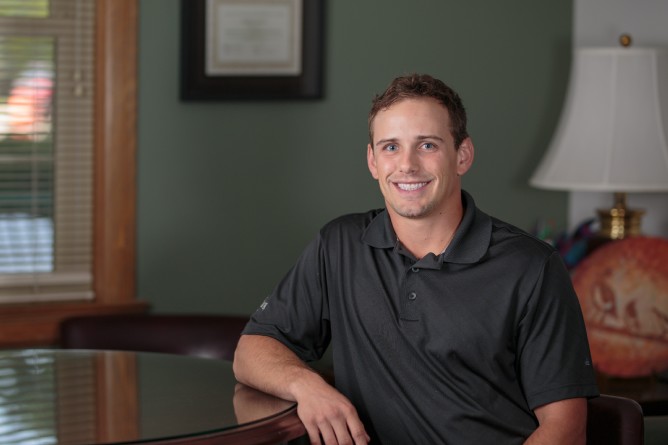
By: Seth Johnson
Risk Management Consultant & Cybersecurity Specialist, Charles Taylor
Seth is a risk management consultant and cybersecurity specialist for Charles Taylor. Charles Taylor is the general administrator of the Wisconsin County Mutual Group (WCMG). The WCMG insures over 280 municipalities and school districts across Wisconsin, providing a complete suite of management services. Seth works with public entities to assist relevant stakeholders in understanding risk. After spending nearly a decade working in strategic, operational, compliance and technology risk management, Seth knows how to successfully assist organizations in integrating risk management into significant activities and functions. With a core background in risk management, Seth is in the process of obtaining a Bachelor of Science degree in computer science, emphasizing cybersecurity.
To be honest, I am more of a Star Wars guy than a Star Trek fan but when life gives you the opportunity to model lessons around movies, timeless classic television shows, or infamous characters, you take it.
I have been in my current role leading the enterprise risk management (ERM) functions for my university for nearly three years and one of the first gifts I was given for my office was a framed picture of Captain James T. Kirk, surrounded by his crew, at the helm of the USS Enterprise. Kirk is pictured with his signature look, complete with half of a smirk, exuding confidence and stoicism. The rest of the crew, standing close by and at the ready, are encircling their captain while positioned at their various stations.
It struck me that this picture was the embodiment of the key components for a successful ERM team. A leader who inspires, sets strategy, makes decisions, and guides with a steady, confident hand. A crew of subject matter experts put together to ensure that the vital aspects of science, safety, health, communications and security assembled to courageously tackle risk management and mitigation. While the language and catch phrases modified over the years and through the various series, the essence remains unchanged:
- Space: the final frontier.
- To explore strange new worlds;
- To seek out new life and new civilizations;
- To boldly go where no one has gone before.
If you are responsible for the ERM function in your organization, particularly if you are like me and were involved in creating the function from the ground up, you will likely appreciate the analogies here. Whether your organization is comprised of 10 people or 10,000, public, private or non-profit, the financial sector, healthcare or higher education, there is often a common denominator; change is hard. Changing processes, systems, traditions and the very people involved in them is a challenge. Convincing folks that there is value in risk identification, assessment and analysis may not be easy in some organizational cultures and may not be seen as a valuable exercise worthy of investing time and money (spoiler alert, not everyone gets excited about risk heat maps and residual risk calculations).
So what do you do? Get ready to be the captain of your Enterprise. The Captain Kirk, Picard, Pike, Archer, Sisko, Georgiou or Janeway. Get ready to be a change agent and ambassador for inculcating an appreciation for embracing risks as opportunities, not obstacles. To boldly go where no one has gone before, you must be willing to do what no one has done before. Creating an ERM function (or maturing an existing program), takes buy-in. Senior executive, top-down tone setting, middle-management coordination and program support; and bottom-up appreciation and acknowledgment that the process is important for the entire organization.
But how, you may say. Follow the advice of my two favorite captains and favorite Vulcan.
Kirk once said, “they used to say that if man was meant to fly, he'd have wings. But he did fly. He discovered he had to.” Lead the change from the front, inspire your teams and your organizations. Risk is not a dirty word. Adaptation and evolution are necessary components for all organizations.
Picard wisely posited, “there is a way out of every box, a solution to every puzzle; it's just a matter of finding it. Things are only impossible until they are not.” Be patient, sometimes change takes time. Champion the efforts to embrace institutional knowledge and processes that work while also being brave enough to approach challenges in different ways.
And of course, perhaps most famously, Spock encouraged everyone to, “live long and prosper.” Long- term organizational change takes sustained passion and investment. Play the long game and remain focused on the mission to make ERM an inextricable part of your organizational DNA.
*The views and opinions expressed in the Public Risk Management Association (PRIMA) blogs are those of each respective author. The views and opinions do not necessarily reflect the official policy or position of PRIMA.*
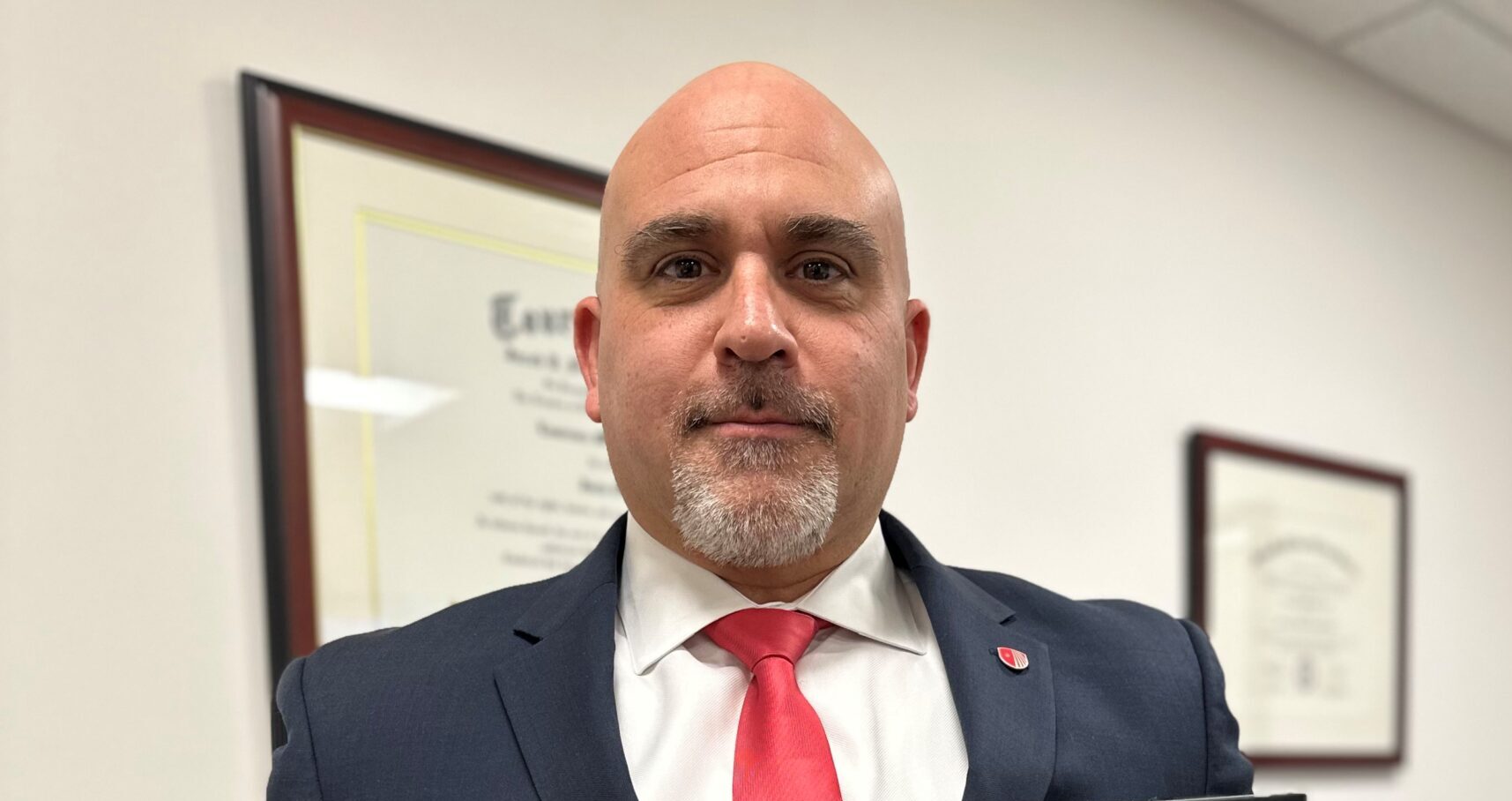
By: Lawrence M. Zacarese, JD, MPA, CCEP, CHSP, CHCM
Vice President for Enterprise Risk Management & Chief Security Officer, Stony Brook University
Summary of Qualifications
Lawrence has more than 32 years' experience in the public and private sector in the areas of safety, security, emergency management, business continuity and risk mitigation as a senior executive, attorney, subject matter expert, consultant and educator.
Responsibilities
In his role at Stony Brook University (SBU), Lawrence is responsible for the direct supervision and management of a 400+ person enterprise risk management division (budget $40M+) comprised of environmental health and safety, emergency management, training and
outreach, university police, public safety, corporate security, business continuity, risk management and insurance, policy and compliance, mobility, parking and transit services, access control and electronic physical security, and ERM technology, research and development.
Professional Affiliations
- PRIMA
- SCCE
- IAEM
- IACP
- FBI NAA
- IBFCSM
- NY State Bar Association
Education
- JD, Touro University
- MPA, Inspector General, John Jay College of Criminal Justice
- Post Graduate Certificate Global Security and Terrorism Studies, Fairleigh Dickinson
- Post Graduate Certificate Criminal Justice Education, University of Virginia
- BA, Forensic Psychology, John Jay College of Criminal Justice
- FBI National Academy (Session #246)
- Senior Executives in National and International Security, Harvard Kennedy School
Is trust prevalent in your various teams in life? Do you generally trust your boss, your coworkers, your subordinates and your customers? Do you usually trust your neighbors, your friends and your children? That second question may seem strange, because you probably don’t worry about friends doing something to “wrong” you, but lack of trust isn’t limited to a concern about moral compromise. Do you trust others to be competent enough to do things correctly and committed enough to do them thoroughly?
Trust is built through three things: actions, interactions and reactions.
Trust is Built Through Our Actions
More than what we say, people often judge us by what we DO in life. We’ve all had the experience where someone SAYS one thing but DOES something different. People watch, judge and remember our ACTIONS much more than our PROMISES.
Trust is Built Through Our Interactions
How we communicate, whether verbally or non-verbally, sends messages to people that are processed consciously and subconsciously allowing them to form an opinion of us that is referred to as our reputation.
How well do you give and receive feedback? How would others rate you on the timeliness and clarity of communicating? Are you actively working to become a better listener? What grade would you give yourself on being compelling, persuasive and memorable? While many of these questions seem to be more about communication than trust, much of the trust we develop is based on how well we communicate and relate to those around us.
When you’re interacting, make it a point to demonstrate genuine empathy. Try to understand other people’s challenges and frustrations. Respect the fact that everyone has certain things that make their job more difficult. Make sure you aren’t guilty of what frustrates you. Live by the Platinum Rule: Do unto others as they would have you do to them.
Keep confidence if someone shares something private with you. Don’t damage trust by repeating something that the other person didn’t want to be made public. If you betray that confidence, you can be sure it will permanently damage their trust in you.
Trust is Built Through Our Reactions
When a problem arises, try to be responsive not reactive. Avoid coming back with an instinctive "knee jerk." Make sure you don’t push people away with harsh reactions, and don’t cultivate an “us and them” atmosphere or allow that to exist.
Building trust in the various parts of your life is one of, if not the most, significant factor in developing personal influence. Doing the things put forth in this article will allow you to strengthen your relationships and deepen your impact. Take the time to do some honest self-assessment and self-reflection. What do you need to work on? How can you become someone that others trust and want to be close to? If you answer those questions honestly, and work purposefully to do what you know you need to, then you will grow your personal influence exponentially.
*The views and opinions expressed in the Public Risk Management Association (PRIMA) blogs are those of each respective author. The views and opinions do not necessarily reflect the official policy or position of PRIMA.*
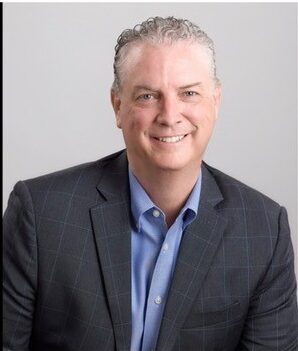
By: Randy Anderson, CSP
Founder/Owner, E3 Professional Trainers
Summary of Qualifications
- 30 years of professional sales experience including Sales Management
- Managed 100+ people
- 18+ years as a full-time trainer
- Trained at hundreds of companies, and has spoken to hundreds of thousands of people regarding employee engagement and workplace productivity
Business Experience
Before starting E3 in 2005, Randy spent 20 years in sales and sales management. Most of that time was spent in media sales, which gave him the opportunity to work with virtually every type of business and in every industry. It is from that experience that he draws the ideas and strategies to help his clients improve their performance in the workplace and to achieve their maximum potential in life.
Professional Affiliations
- Member - National Speakers Association
Education
- Bachelor of Science in Ag Communications - Texas Tech University
- Your Leadership Legacy (Ken Blanchard Co.)
- Changing the Picture (Ziglar Corp.)
- Ethics 101 (Cox Enterprises, Inc.)
- LifeNet Time Management Training (Life Net Inc.)
- Basic Selling Skills (AVI International)
- Top Selling (Ziglar Corp.)
- Professional Selling Skills (Learning International)
- System 21 Selling (Executive Decision Systems)
- Fast Track Media Sales (Cox Media, Inc.)
Recent data shows nearly one fifth of Americans are navigating a mental health condition. While media reports often cite statistics like this to highlight the severity of the mental health crisis in America, the practical realities of addressing mental wellness in the workplace are much more nuanced.
Beyond the headlines, there is neither a quick fix nor a one-size-fits-all approach to employee mental wellness. Leaders need to take an individualized approach to mental wellness solutions, especially for employees in public service roles who more frequently experience trauma in the workplace.
Follow these best practices to approach employee mental wellness with informed advocacy, urgency and empathy.
Early intervention with an individualized approach
When it comes to workplace trauma reactions and PTSD cases, early intervention leads to better outcomes. Whether your goals include reducing or preventing symptoms, lost time or containing medical costs, everybody can benefit from early intervention tailored to the individual’s need in the moment.
Leaders, listen to your employees and be proactive in getting them support as soon as possible. Although first responders, transit workers, healthcare workers and retail workers are more impacted by trauma than others, trauma can impact any work group. Also, not everyone reacts to trauma the same way, so know how to recognize different trauma reactions including “hidden” symptoms like burnout, disability, absenteeism and interpersonal conflicts in the workplace.
Write, share and discuss your workplace policies for traumatic events and know who else to call after 911 if a traumatic event does occur in the workplace. Early intervention happens much more seamlessly when these secondary calls are made to resources like trauma response counselors, workers’ compensation claims administrators, occupational health specialists and employees’ emergency contacts.
Create a workplace culture of mental wellness
It is the responsibility of leaders to be proactive about preventing burnout, monitoring the mental wellness needs of their team and promoting mental wellness teamwide. Managers can take collaborative steps like proactive check-ins about stress and PTO utilization with their employees and use these touchpoints as opportunities to look for early warning signs of burnout, stress or more severe symptoms.
During these conversations, managers don’t need to have all the answers at the ready to ask their employees how they can help or to help employees get resources. Simple, actionable questions, such as asking how an employee could feel more supported, followed by active listening and note-taking should be enough to start a sincere dialogue that can lead to real change for an employee who is struggling with stress.
Shifting attitudes and changing laws: the future of workplace mental wellness
Workplaces, especially those of public servants, have learned some hard but necessary lessons over the past few years navigating challenges like COVID and increased traumatic disturbances in the workplace. Workplaces can’t ignore traumatic experiences or brush employees’ symptoms under the rug – leaders need to take a proactive and early intervention approach to mental wellness.
With more workers’ compensation laws changing including additional criteria for mental health-related injuries, more claims cases are being made – and accepted – around mental stress and psychological trauma. Employees have more resources than ever to get the help they need, and it starts with advocacy in the workplace and the empathy to meet employees in crisis where they are.
*The views and opinions expressed in the Public Risk Management Association (PRIMA) blogs are those of each respective author. The views and opinions do not necessarily reflect the official policy or position of PRIMA.*

By: Mark Debus, MSW, LCSW
Clinical Manager, Behavioral Health, Sedgwick
As clinical manager of behavioral health services at Sedgwick, Mark leads a team of master’s level behavioral health specialists. His team consults with claims examiners and clients on complex recovery or psychiatric injury claims. They also work with injured employees who are struggling with the aftereffects of a workplace trauma or who are experiencing other types of psychosocial stressors in their lives. His team helps injured workers overcome barriers to treatment and improve motivation for successful return to work outcomes. In addition, he provides subject matter expertise on mental health issues as they relate to the workplace and management practices. Prior to Sedgwick, Mark worked in employee assistance (EAP) and the mental health field in crisis response services. Mark has a BA in psychology and communications from Marquette University and an MSW from the University of California at Berkeley. He is a licensed clinical social worker (LCSW) in Illinois.
The primary role of a municipal arborist is to keep tabs on tree health, structure and the risk posed to the public, all while ensuring that insect and disease treatments, additional plant health care treatments, contracted services for pruning deadwood and removing hazardous trees, emergency storm response, and in-house tree trimmers are funded.
A strong relationship between risk managers and municipal arborists is strongly suggested. Municipal arboriculture isn’t something that is historically well funded but is increasingly critical due to the urban forests’ response to the changing climate. The typical forest is more resilient than an urban forest due to the conditions that trees are required to grow in. Compacted, unfertile soil with little oxygen for root systems, a lack of beneficial mycorrhizae, hotter temperatures, small spaces for root development, vehicle strikes and the public who vandalize trees all impact the viability of the urban forest.
A city tree’s life is rough, right? Now think about the past several years and the seasons of drought that is accumulating in record books, hottest temperatures ever recorded, intense life-threatening storms, forest fires, and invasive pests and diseases. Without having a crystal ball to predict when we may find some normalcy in weather patterns, the municipal arborist must continue to do the best that they can with the tools and resources they have. Risk managers could be incredibly supportive by contributing to business cases for support staff for increased demand of tree inspections as well as covering certain hazard mitigation projects.
Examples where the City of Hartford’s risk manager assisted the city forester, included forest fire planning in Keney Park, an almost 700-acre park that is maintained by the city and is heavily forested. One season, we had such prolonged drought, that there were four significant forest fires, which resulted in emergency response and preparedness as these events could have caused substantial destruction to dwellings surrounding the park. The risk manager, the fire department and I worked together to come up with a plan and purchased three UTV’s that were outfitted with the appropriate tanks to get deeper into the woods where fire apparatuses could not access. Funding for these UTV’s came from the risk manager's budget.
Another case involved Elizabeth Park, the west side, which resides in West Hartford and is home to the nation’s oldest municipally owned rose garden. This park is heavily trafficked, from sunrise to sunset, and had so many large oaks which were suffering from several seasons of drought. I identified over a dozen trees that required removal and over 200 other trees needed hazard pruning. The budget for this project was over a quarter of a million dollars and was not something that the department of public works could fund. Hartford’s risk manager covered the costs for maintenance and parkgoers were safe once again. It’s a good idea to connect with your municipal arborist and plan on making hazard mitigation a line item in the risk management budget.
*The views and opinions expressed in the Public Risk Management Association (PRIMA) blogs are those of each respective author. The views and opinions do not necessarily reflect the official policy or position of PRIMA.*
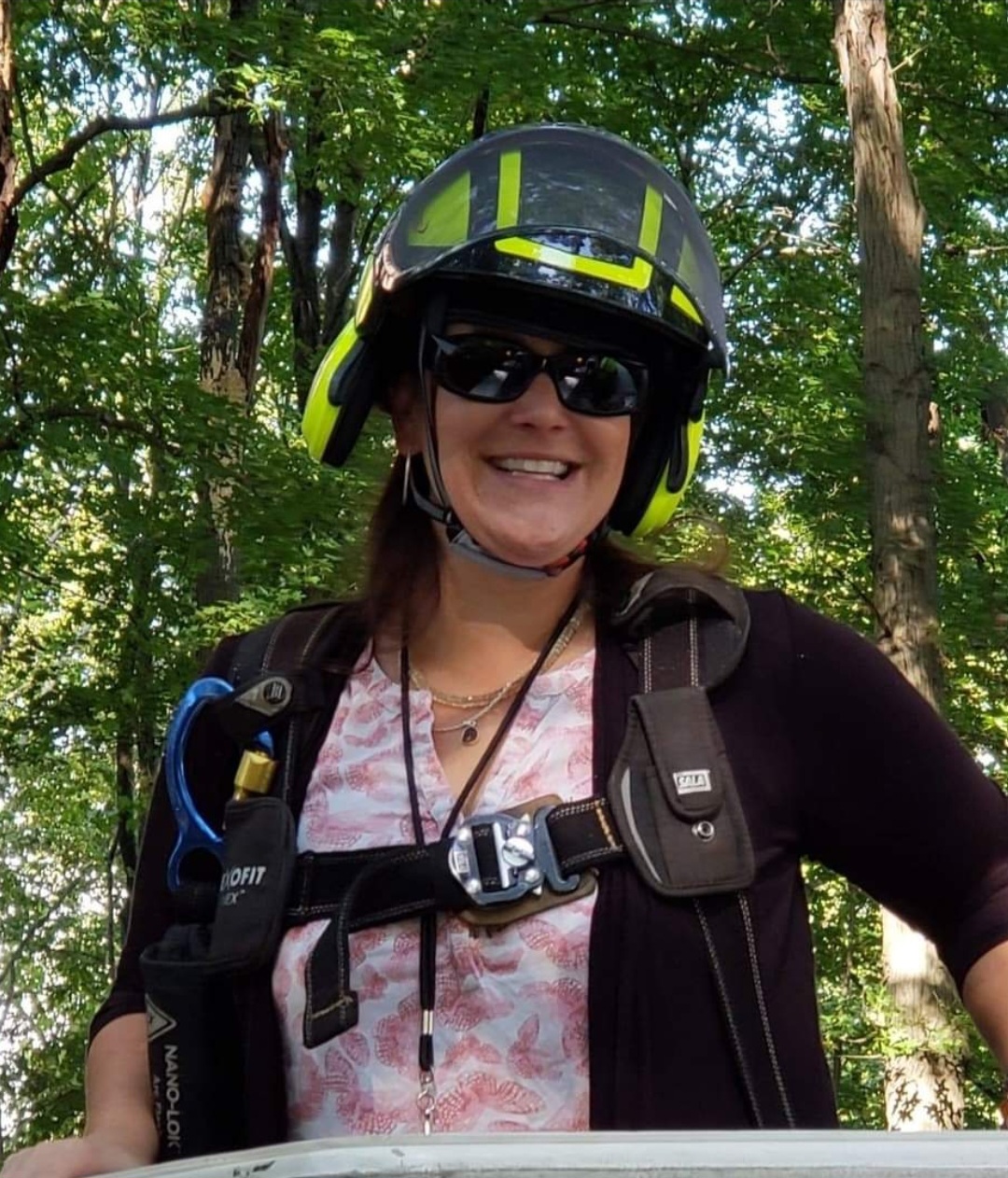
By: Heather Dionne
Branch Manager, SavATree
Summary of Qualifications
Heather is a passionate urban forester with over 20 years of experience in the field. She is a motivational leader and supportive collaborator with specialized training in urban and community Forestry and park maintenance with extensive tree hazard analysis and inventory skills.
Responsibilities
Heather currently manages the general tree care team, plant health care team and lawn team at SavAtree in Bloomfield, CT, as the branch manager. This involves responsibility for overall productivity and profitability of the branch office, including safety, quality and productivity in order to achieve business goals in the area of sales, employee engagement and profitability. Other responsibilities include managing and coaching sales team and support staff, and initiating training and development programs under guidelines as established by the corporation.
Business Experience
Heather is a recently retired city forester for the City of Hartford, CT. For 11 years. The job included:
- Managing the urban forest in Harford, which includes 2,800 acres of greenspace and 434 shoulder miles of roadway, including two municipal golf courses; managing the Forestry Division and contracted tree services for the City of Hartford; implementation of the street-wide tree maintenance program; tree protection and construction oversights; supervising snow plow operations and park maintenance operations in Elizabeth Park and South Park crews; working in partnership with Knox, Inc. in the reforestation efforts in the city; and assisting with the drafting of some of the strongest zoning regulations in the country for protecting and enhancing tree canopy.
- Designing wood disposal management plan with state approval; working with various agencies to minimize environmental and wildlife impacts with proposed tree clearing for Brainard Airport; leading forest management practices and climate adaptability studies for Keney Park, including partnership with CT DEEP and USFS; requisition and PO management for tree contractors; presenting on safety to stakeholders in terms of fire response in the city's park systems and worked with the risk managers and Fire Department to outfit the city with the necessary equipment and training for forest fire response; participating in panels on the importance of having a tree inventory.
Professional Affiliations
- Connecticut certified arborist: S-5529
- International Society of Arboriculture Certified Arborist: NE-6331A
- CT licensed forest practitioner: SFPH001237
- Certified Tree Warden through the State of Connecticut's Tree Warden Association
- Chair of the Connecticut Urban Forest Council (2018-present)
Education
Heather has a Bachelor of Science in environmental sciences, emphasis in urban and community forestry from Unity College in Maine. She completed human dimensions in natural resources through the University of Connecticut. Heather also attended Middle Management Institute Training through the City of Hartford as well as the Municipal Forestry Institute in Lake Arrowhead, CA through the Society of Municipal Arborists.
Whether it is the latest news on drug importation from Canada, newest medications designed to treat weight loss or headlines involving retail pharmacies closing their doors for good, there is a lot to keep up with in the world of pharmacy. Whether your biggest concern is drug safety, access, utilization or pricing, risk managers want to feel supported by a comprehensive pharmacy solution. Over the last 10 years, I have supported a large pharmacy solution that has adapted and thrived in an ever-changing industry. Yet, it has become apparent that any successful pharmacy solution must incorporate three core capabilities.
Industry Understanding
There is a big difference between knowledge and understanding. That is, to know certain facts about drug pricing or to know the main players in the industry might be helpful, but it is a much different task to understand how the larger ecosystem of pharmacy operates. I would argue that there are very few business sectors that are more difficult to understand than pharmacy. While partnering with people who have a deep understanding of pharmacy is crucial, it’s also important for those that oversee a pharmacy solution to take ownership of that understanding to make better choices as it relates to individual program needs. Whether it’s Amazon or Mark Cuban disrupting the space or a law setting new expectations for pricing, building out your own mental framework of the system is critical.
Clinical Expertise
Keeping up with industry insights requires time, but keeping up with the latest clinical insights, research and outcomes requires a team. A successful pharmacy solution must employ (or at least have access to) a qualified team of clinical experts. Even though I am a pharmacist, I’ve been fortunate enough to work alongside a large team of clinical experts consisting of other pharmacists, pharmacy interns, nurses and physicians. As drug research continues to expand our ability to treat and cure conditions, staying connected to experts who can determine the clinical value is important. For example, new research was published daily during the COVID-19 pandemic, but clinical expertise helped make informed decisions on what needed to stay on formulary or be excluded.
Technological Agility
Last but not least, harnessing technology to stay agile and flexible is crucial for any pharmacy program. As healthcare continues to move towards a more patient-centric approach, connecting and communicating with patients remains an important focus, and technology plays a huge role in this effort. Technology can also help clinicians better communicate with providers before a prescription is even written so that they have a clear understanding of what is formulary for a given patient. If you support or oversee a pharmacy solution, be sure to partner with vendors who are investing in technology that will improve the experience, at all touchpoints but especially the patient.
*The views and opinions expressed in the Public Risk Management Association (PRIMA) blogs are those of each respective author. The views and opinions do not necessarily reflect the official policy or position of PRIMA.*

By: Paul Peak
Vice President, Clinical Pharmacy, Sedgwick
Paul joined Sedgwick in May 2014 as a clinical pharmacist. In the years since, he has been promoted to vice president, clinical pharmacy. In this role, he helps oversee Sedgwick’s partners and has oversight of Sedgwick’s clinical pharmacist team. This team provides clinical support to the Sedgwick pharmacy program as well as consultations to the medical provider community for alternative pain control strategies, targeting long-term claims with high cost and high risk. Paul also oversees vendor partnerships with the Pharmacy Benefit Managers (PBMs) that support the Sedgwick program. Paul brings a wealth of experience to Sedgwick. Prior to joining Sedgwick, he worked for multiple companies and healthcare facilities as a pharmacist for nine years. Paul graduated magna cum laude with a Doctor of Pharmacy degree from Samford University in May 2006.
When it comes to injuries, especially musculoskeletal disorders, a physical demands analysis (PDA) can be an extremely helpful and useful tool. Not only can it help reduce the number of injuries in an organization, but by doing so, it will also help deliver significant cost savings.
A PDA quantifies the essential demands required by an employee for a job. The data within a PDA can also be used as legally defensible documentation when necessary. A PDA has many applications; the two most common are matching an employee to the right job during the hiring process and returning an employee back to work after an injury. How does a PDA do this?
A PDA helps match an employee to the right job through:
- Providing accurate, detailed job descriptions
- Linking an employee’s physical capabilities directly with essential requirements of the job
- Providing accurate data for downstream testing procedures, such as pre-employment screening and post-offer employment testing (POET)
A PDA helps return an employee back to work after an injury, faster and safer by:
- Objectively determining an employee’s current ability (post-injury) to perform essential requirements of the job
- Identifying any necessary job modifications or accommodations to help avoid re-injury
- Providing accurate data for downstream testing procedures, such as Fit for Duty testing and Functional Abilities Evaluation
How do the benefits of a PDA translate into decreased injury rates and higher cost savings?
A PDA helps an organization reduce injuries and save costs by quantifying and categorizing the manual material handling aspects of the job, as well as positional tolerances (standing, walking, sitting, reaching, etc.). This provides injury prevention specialists with the data necessary to design, develop, implement and evaluate controls to reduce the risk of injury in the workplace. In an organization, this can be applied to:
- Engineering: tools/equipment, work process design, workstation setup, etc.
- Administrative: work hardening, team lifts, work shift design/modifications, etc.
- Work Practice: development of best work practices, training, etc.
- Supporting employment decisions by determining and classifying jobs based on the U.S. Dept. of Labor physical demand level (Sedentary, Light, Medium, Heavy, Very Heavy), as well as fine motor intensive, gross motor, sitting jobs, standing jobs, etc. This helps to ensure the work environment is more inclusive for employees, as well as ensuring they are not working in jobs that they are not physically capable of performing.
The results of a scientifically rigorous physical demands analysis can be utilized for physical abilities testing to employ candidates capable of performing the physical requirements of the essential functions of the job. They can also be utilized as the basis for developing training camps/mock assembly to prepare new and existing employees to be successful in jobs with different physical demands. In the event of injury, the physical demands analysis provides healthcare professionals with an accurate depiction of the physical requirements of a job for return-to-work criteria to ensure the employee is physically capable of safely returning to work.
A physical demands analysis, when done correctly, can serve as a critical tool to help place employees in the correct job, significantly reducing risk and cost of injury. Ultimately, this allows for a healthier, happier, more productive workforce.
*The views and opinions expressed in the Public Risk Management Association (PRIMA) blogs are those of each respective author. The views and opinions do not necessarily reflect the official policy or position of PRIMA.*

By: Arielle West, DPT
Senior Solutions Strategist, VelocityEHS
Arielle helps lead the overall vision and strategy for health and ergonomics solutions as well as provides subject matter expertise in healthcare, health and wellness, human movement analysis, and more. Arielle previously worked for Kinetica Labs on their business development team. She supported their ergonomics product, as well as led their expansion into the digital health and healthcare technology markets, utilizing machine learning and motion capture technology. VelocityEHS acquired Kinetica Labs in 2021.
Arielle is a Doctor of Physical Therapy (DPT), and received her degree from Northeastern University in Boston, Massachusetts. She is a licensed physical therapist in California and Massachusetts, with specialties in musculoskeletal disorders (MSDs), orthopedics and sports medicine.

By: Dr. James Rethaber, Ph.D., CPE, LSSMBB
Vice President, Technical Operations, Fit for Work
Dr. Rethaber provides strategic direction for the safety, ergonomics and testing departments/initiatives, as well as process mapping and streamlining of processes to increase operational efficiency and effectiveness for Fit for Work clients. Dr. Rethaber also oversees the onboarding and continuing education initiatives to assist Fit For Work staff with ever-changing/evolving needs of internal and external clients. Prior to joining Fit For Work in 2007, Dr. Rethaber worked in the education and healthcare fields. He has over 20 years of experience in the fields of engineering, psychology and musculoskeletal injury prevention.
Dr. Rethaber has a Bachelor of Science degree in sports medicine, a Master of Science degree in exercise physiology, a Master of Science degree in industrial engineering, a Master of Science degree in applied psychology and a Ph.D. in human performance technology (training & development). Dr. Rethaber is a Board-Certified Professional Ergonomist (CPE) and is a Lean Six Sigma Master Black Belt. Dr. Rethaber serves on industry advisory boards at Texas A&M University – College Station and Texas State University – San Marcos and is a former member of the board of directors with the Board of Certification in Professional Ergonomics.












